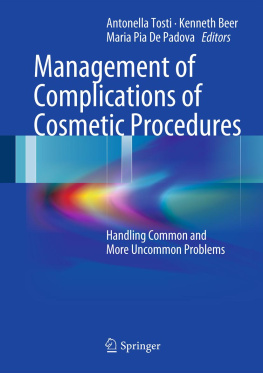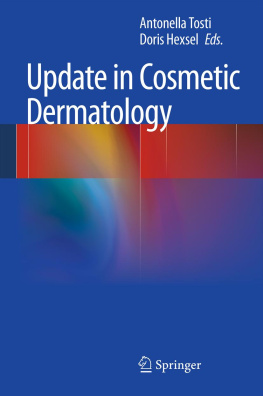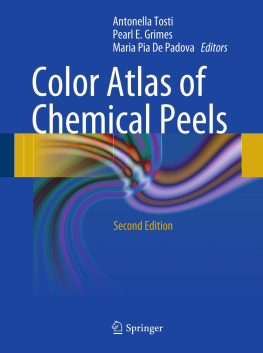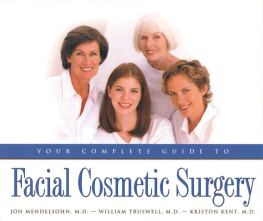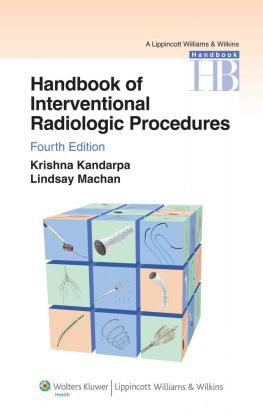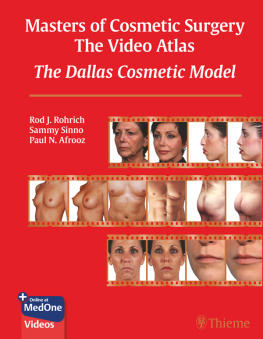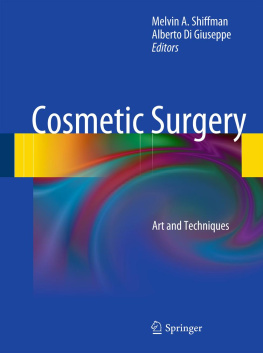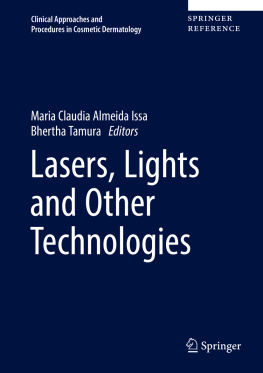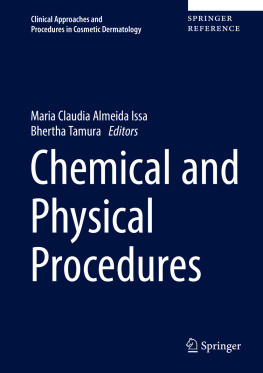Antonella Tosti , Kenneth Beer and Maria Pia De Padova (eds.) Management of Complications of Cosmetic Procedures 2012 Handling Common and More Uncommon Problems 10.1007/978-3-642-28415-1_1
Springer-Verlag Berlin Heidelberg 2012
1. Complications of Superficial and Medium Chemical Peels
Maria Pia De Padova 1 and Antonella Tosti 2
(1)
Department of Dermatology, Nigrisoli Hospital Bologna, Bologna, Italy
(2)
Department of Dermatology and Cutaneous Surgery, Miller School of Medicine, University of Miami, Miami, FL, USA
Maria Pia De Padova
Email:
Abstract
Superficial and medium chemical peels usually cause mild and transitory side effects.
1.1 Key Features
Superficial and medium chemical peels usually cause mild and transitory side effects.
Most side effects resolve spontaneously even if several months may be needed.
Topical steroids and topical and systemic antibiotics are useful for treatment of most complications.
1.2 Introduction
Superficial and medium peelings include salicylic acid 2530%, glycolic acid 70%, pyruvic acid 4060%, trichloroacetic acid 2035%, and combination of salicylic acid or Jessner peel with trichloroacetic acid.
Superficial and medium peelings are utilized to induce a damage limited to the epidermis and papillary dermis. This results in epidermal regeneration and postinflammatory collagen neoformation. Since their potency is mild, repeated treatment is required to obtain the desired effects. Choice of peel depends on skin type and indication.
Superficial and medium chemical peels usually cause mild and transitory side effects. The most common complication is the development of pigmentary changes, which are especially seen in patients with dark phototypes. Development of this complication may be due to utilization of a peeling which is too strong for the patients phototype or to inadequate photoprotection in the postpeeling period.
1.3 Technology
1.3.1 Glycolic Acid 3070%/Pyruvic Acid 4060% []
Glycolic and pyruvic acid peelings are utilized for the treatment of photoaging, melasma and postinflammatory pigmentation, and acne scars. Pyruvic acid can also be used for active acnes.
Disadvantages
Penetration often not uniform for glycolic acid
Pyruvic acid causes intense stinging and burning sensation during the application and produces pungent and irritating vapors for the upper respiratory mucosa
Require neutralization
High risk of overpeel if time of application is too long or the skin is inflamed
1.3.2 Jessners Solution
Jessners solution is utilized for the treatment of photoaging, melasma and postinflammatory pigmentation, and active acne.
Advantages
Excellent safety profile
Can be used in all skin types
Substantial efficacy with minimal down time
Utilized for combination peels as it enhances the penetration of other agents
Disadvantages
Concerns regarding resorcinol toxicity, including thyroid dysfunction
Manufacturing variations
Instability with exposure to light and air
Excessive exfoliation in some patients
1.3.3 Salicylic Acid 2030%
Salicylic acid peeling is utilized for the treatment of melasma and postinflammatory pigmentation, and comedonic and active acne.
Advantages
Established safety profile in all skin types
Formation of white precipitate allows to verify if application is homogeneous
Salicylic acid has an anesthetic effect that is useful in combination peelings
1.3.4 Trichloroacetic Acid 1535%
Trichloroacetic acid is utilized for the treatment of photoaging and acne scars. Low concentrations can be utilized for the treatment of melasma and postinflammatory pigmentation.
Disadvantages
Stinging and burning sensation during the application
High concentrations are not recommended in skin types V to VI
Can cause hypo/hyperpigmentation
1.3.5 Combination Peeling: Salicylic Acid 25% + TCA 1530% []
Pretreatment with salicylic acid permits to obtain a medium peeling with low TCA concentrations and therefore avoids pigmentary complications especially in dark phototypes.
Combination peeling with salicylic acid + TCA is utilized for the treatment of photoaging and acne scars. Combination peeling with low concentrations of TCA can be utilized for the treatment of melasma and postinflammatory pigmentation.
1.3.6 Contraindications to Superficial and Medium Peelings
Contraindications to superficial and medium peelings include:
History of hypertrophic scars
Connective tissue disorders
Active skin disorders on the treatment sites
History of treatment with systemic retinoids in the previous 4 months
Oral anticoagulant treatment
Pregnancy
1.3.7 Prepeeling Care
This is essential to obtain uniform penetration and avoid postinflammatory hyperpigmentation. Prescribe topical products containing 12% salicylic acid, 23% pyruvic acid, or 0.05% retinoic acid to be applied three times a week for 1 month. Prescribe 4% topical hydroquinone three times a week for 1 month. Application of these topicals should be interrupted 4 days before the procedure to avoid excessive penetration of the peeling agent.
Treatment with oral antivirals should be started 2 days before the procedure in patients with history of recurrent herpes simplex infections.
A detailed informed consent should be given to the patient at this time to give her/him the possibility of understanding the procedure and asking possible questions before treatment. We always also provide written information about the procedure. It is very important to explain clearly to the patient that superficial and medium peels require multiple sessions and can improve but not completely resolve photoaging, pigmentary disorders, and acne scars to avoid excessive expectations.
It is mandatory to obtain good quality pictures before starting the procedure. This is an essential documentation for follow-up and for possible medicolegal issues.
1.3.8 Postpeeling Care
It is very important to explain the patient to absolutely avoid sun exposure and prescribe a sun block to be applied several times a day.

